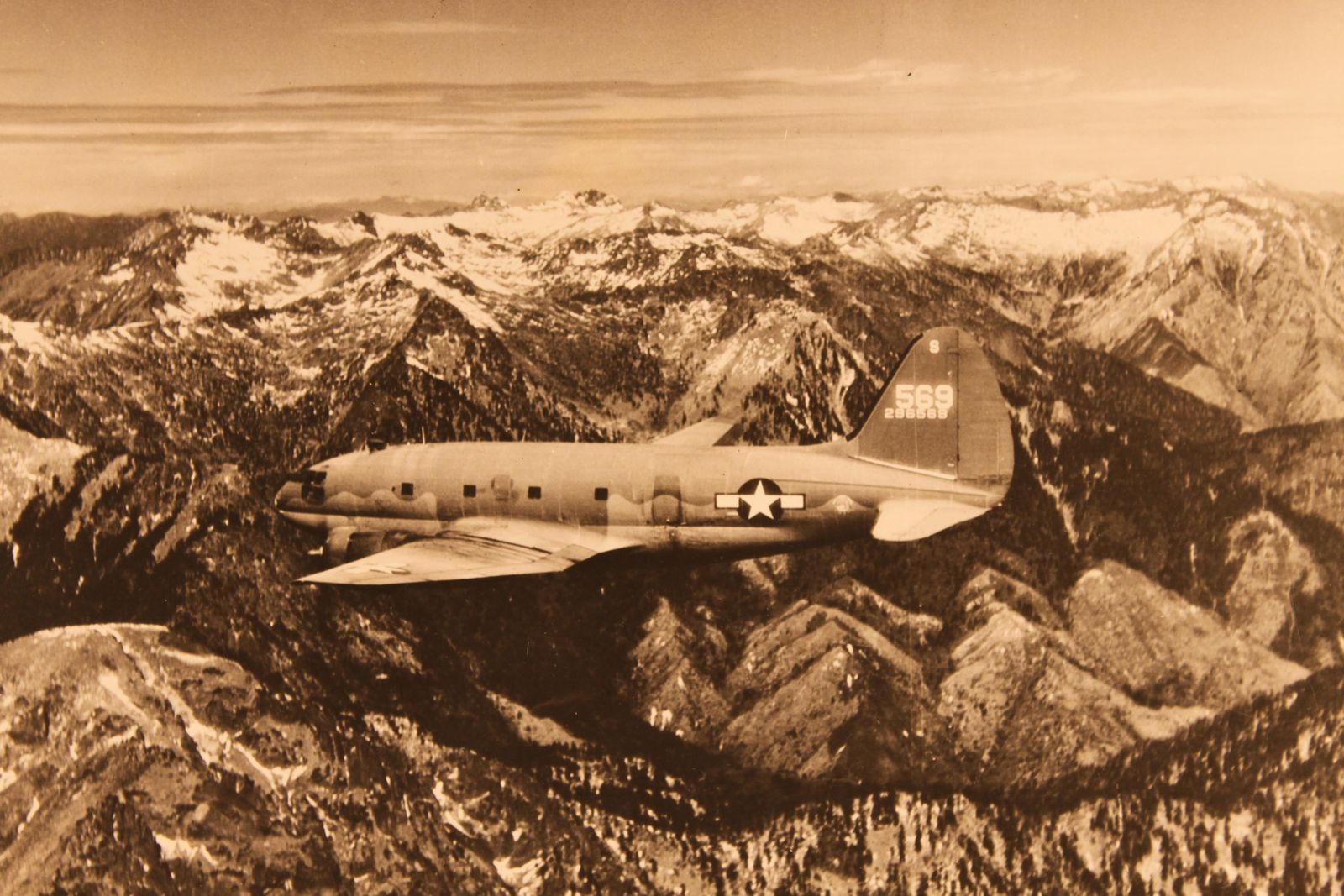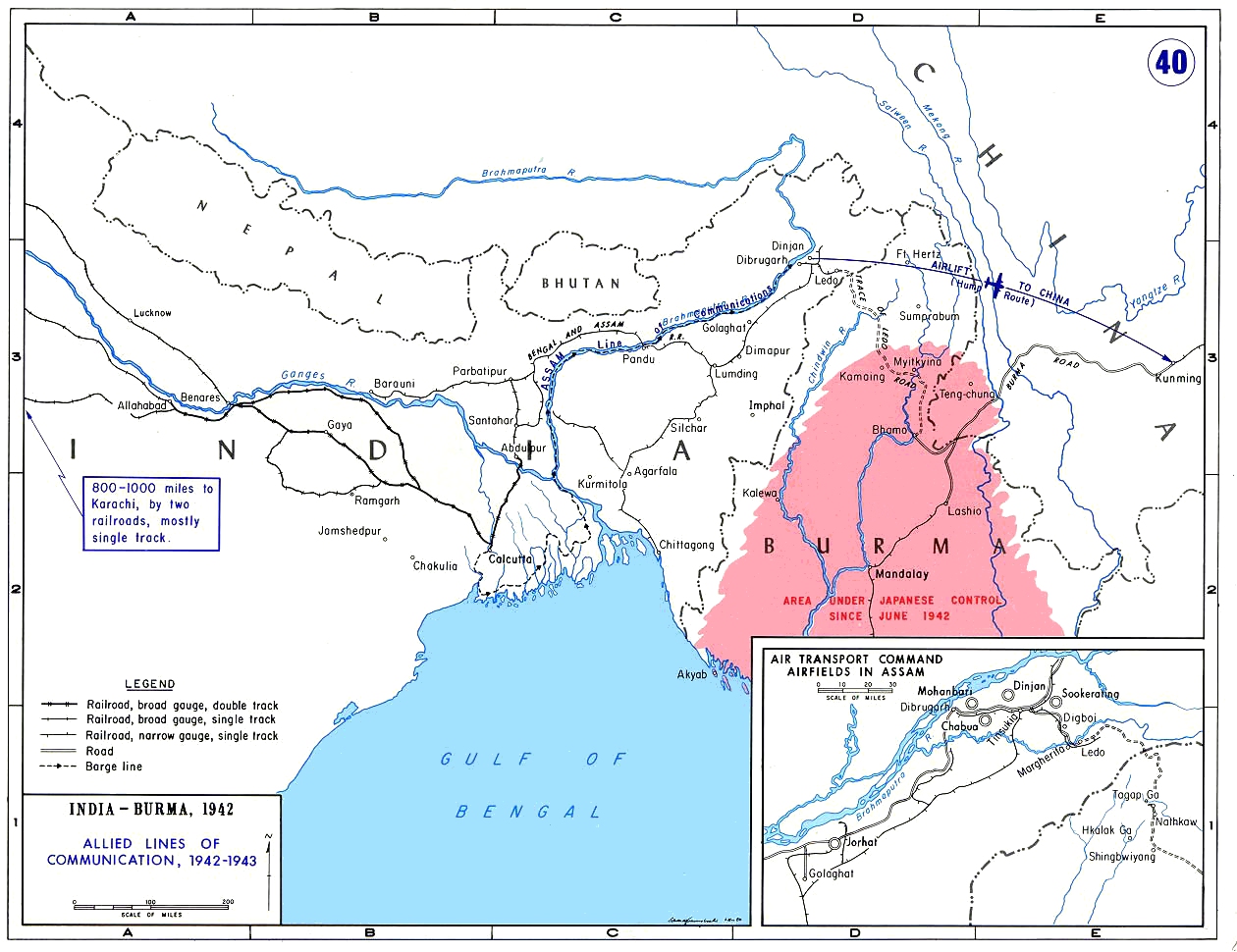
C-46 Commando over "The Hump"
Posted on 12/10/2023 9:59:08 AM PST by DFG
A newly-opened museum in India houses the remains of American planes that crashed in the Himalayas during World War Two. The BBC's Soutik Biswas recounts an audaciously risky aerial operation that took place when the global war arrived in India.
Since 2009, Indian and American teams have scoured the mountains in India's north-eastern state of Arunachal Pradesh, looking for the wreckage and remains of lost crews of hundreds of planes that crashed here over 80 years ago.
Some 600 American transport planes are estimated to have crashed in the remote region, killing at least 1,500 airmen and passengers during a remarkable and often-forgotten 42-month-long World War Two military operation in India. Among the casualties were American and Chinese pilots, radio operators and soldiers.
The operation sustained a vital air transport route from the Indian states of Assam and Bengal to support Chinese forces in Kunming and Chunking (now called Chongqing).
The war between Axis powers (Germany, Italy, Japan) and the Allies (France, Great Britain, the US, the Soviet Union, China) had reached the north-eastern part of British-ruled India. The air corridor became a lifeline following the Japanese advance to India's borders, which effectively closed the land route to China through northern Myanmar (then known as Burma).
The US military operation, initiated in April 1942, successfully transported 650,000 tonnes of war supplies across the route - an achievement that significantly bolstered the Allied victory.
Pilots dubbed the perilous flight route "The Hump", a nod to the treacherous heights of the eastern Himalayas, primarily in today's Arunachal Pradesh, that they had to navigate.
(Excerpt) Read more at yahoo.com ...

C-46 Commando over "The Hump"
Marking.
Since 2009, Indian and American teams have scoured the mountains in India’s north-eastern state of Arunachal Pradesh, looking for the wreckage and remains of lost crews of hundreds of planes that crashed here over 80 years ago.
I had a client who flew the hump, wish I had been more active in talking to him about it.
He did talk about a bit, at end of the war they loaded up a lot of equipment that fit in the plane and dumped them out over the sea.
I’ve read a little about the “Hump” campaign, but didn’t know they lost that many planes. Tough duty. I remember reading that the C-46 was called a flying coffin because of its’ propensity for engine fires when airborne.
Here is the actual source for those not thrilled with having to tip Yahoo first.
https://www.bbc.com/news/world-asia-india-67633928
“but didn’t know they lost that many planes.”
Me, either. Wow, that’s a lot of loss. I had no idea.
It may be a noble pursuit? But what is the motivation since 2009?
The US Defense POW/MIA Accounting Agency (DPAA), the US agency that deals with soldiers missing in action, has sent repeated teams to Arunachal Pradesh to locate the remains of missing servicemen.
There is usually a source of funding for this. That is ok, this is an accurate rebuilding of history. There is prob some local money in this for the museum as well as ours, or not?
Arunachal Pradesh chief minister Pema Khandu, what is his motivation? Remember some of the pilots were Chinese.
In the meant time, we are tearing down our monuments and history......................................
That’s an insane amount of aircraft lost.
I didn’t know the USAF carried out air raids from a base in India during WW II but apparently they did
https://en.m.wikipedia.org/wiki/Kalaikunda_Air_Force_Station

Here is the "Burma Road" land route overlaid on "The Hump" air route.

I worked in a natural gas / urea plant about 50 miles south of Yibin for seven months back in '76-'77. At the time, I had no idea I was in the main transport and supply lines area of WW II.
The flying tigers. starring John Wayne. Mostly civilian pilots fighting for the Chinese, for a couple years before Pearl Harbor.
I once talked to a WW II pilot who flew the Hump. He described as always dangerous and often harrowing due to weather, distance, heavy loads, remoteness, forbidding terrain, and operating at the extremes of what the aircraft and navigational technology of the era could do. The effort was necessary though to help keep China in the war against Japan.
Technology.
called the “flying coffin” - I was a passenger several times flying into Korea, 52’-’53. They claim if power is lost in one engine, the other cannot keep her up.
The China-Burma-India theater may still may have been safer than flying bombing runs over Europe.
The grouchy old hardware store owner I used to frequent in the 1970s was a c-47 pilot who flew over the hump with supplies for Chang and Chenault during the war.
Disclaimer: Opinions posted on Free Republic are those of the individual posters and do not necessarily represent the opinion of Free Republic or its management. All materials posted herein are protected by copyright law and the exemption for fair use of copyrighted works.